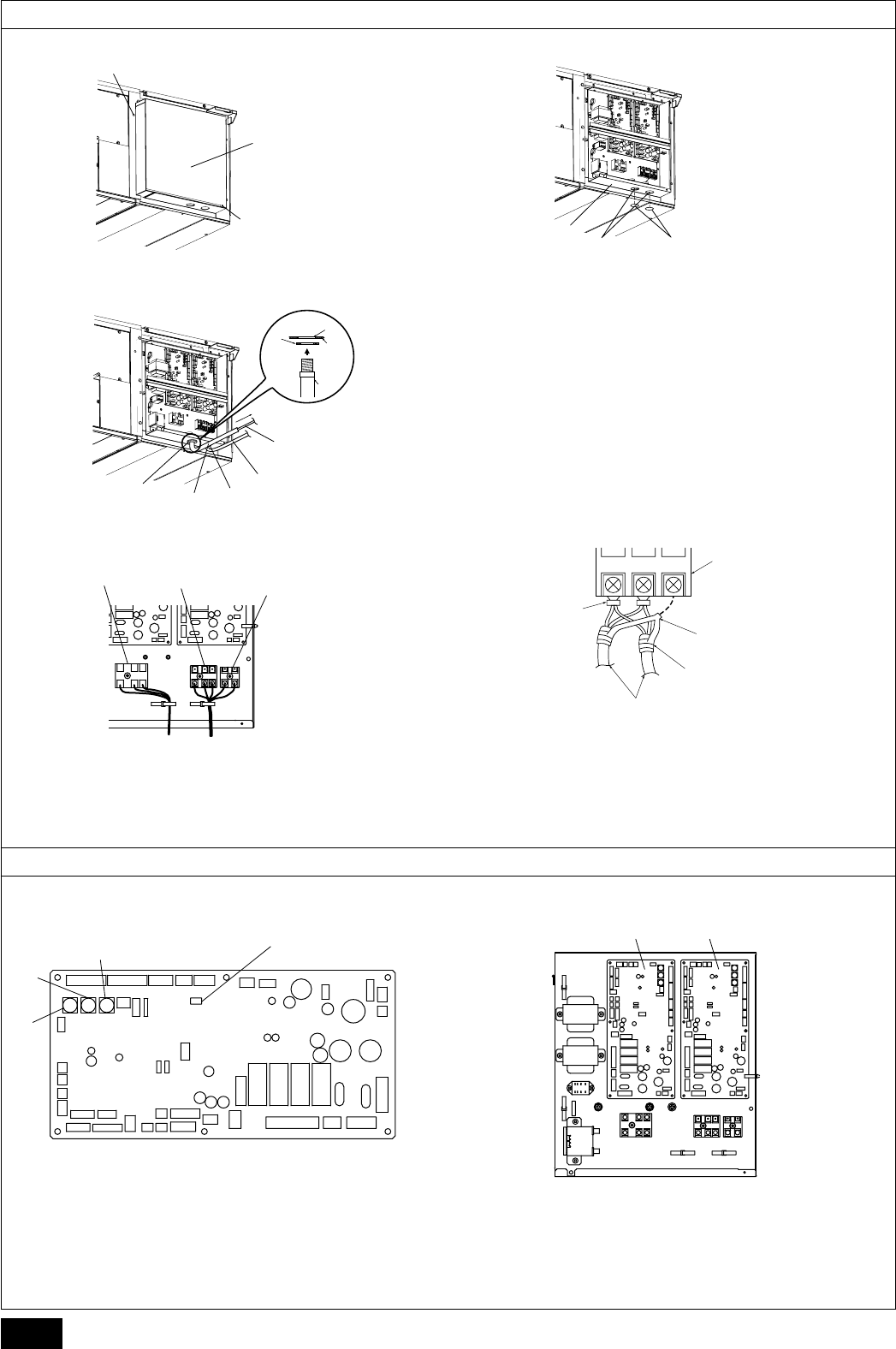
6
A Use conduit to keep the weight of the cable and external force from being applied to the power
supply terminal connector.
B Power source wiring
C Conduit
D Te r minal block box
E Knockout hole (for power source wiring)
F Washer (accessory)
G Tensile force
H Use ordinary bushing
I Tr ansmission wiring
A Power source terminal block
B Transmission terminal block to outdoor unit
C Transmission terminal block to remote controller
A Te r minal block
B Round terminal
C Shield wire
D The ground wire from two cables are connected together to the S terminal.
(Dead-end connection)
E Insulation tape (To keep the ground wire of the shielded cable from coming
in contact with the transmission terminal)
<Indoor controller board>
9.3
[Fig. 9.3.3]
[Fig. 9.3.4]
[Fig. 9.5.1]
[Fig. 9.3.5]
9.5
A Terminal block box
B Knockout hole
C RemoveA Screw (2pcs)
B Cover
[Fig. 9.3.1]
[Fig. 9.3.2]
A
B
C
A
B
A
A
B
C
F
E
D
C
A
I
C
H
B
G
M2 SM1
A
B
C
E
D
A
B
C
D
A SW11: Swich (1s digit address set)
B SW12: Swich (10ths digit address set)
C SW14: Swich (connection no. set)
D SWE: Conector (emergency operation)
[Fig. 9.5.2]
B A
A Indoor controller board (main)
B Indoor controller board (reheat)


















